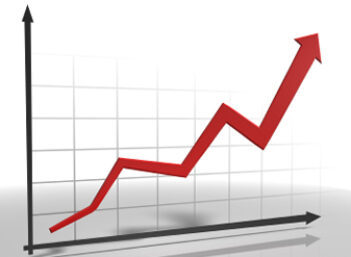So you've played the stock market for a while now and have had your fair share of success. You've had winning trades and you're satisfied with your returns. Yet you yearn for more. You want the opportunity to hit a home run here and there without shelling out a big chunk of change. Well, options are the way to do that, so let's delve into the world of options and how investors can profit there.
While there are many complex options strategies that are worth exploring, the novice investor should stick to the basics before moving onto more advanced concepts. First, it's important to understand that an option is nothing more than a contract between two parties where one party has the right, but not an obligation, to do something.
Second, we need to know the most basic types of options and what they entail. If you feel like a stock or another security is going to move down, but don't feel comfortable directly shorting that security, you would buy a put option. put buyers are rewarded by down moves. On the other hand, if you're feeling bullish about a particular security, you would buy a call option. Calls win when the security goes up.
The beauty of options is their cost efficiency, which is bolstered by the use of leverage. Say we want to buy 100 shares of Company XYZ when it's trading at $25. That would cost us $2,500. However, one call contract, which gives the right to buy those 100 shares, is going to be far cheaper. For example, the XYZ $25 calls for a given month may be trading at $2, meaning our cost basis is $200 to control the same 100 shares. (Contract prices are quoted on a per share basis, so 100 shares x $2 = $200).
Time Is Rarely On Our Side
Another crucial element of options investing is time decay. A primary component of puts and calls is their expiration date and some would argue that the option's time-frame is more important than the price paid to be in the trade. Here's why: Options contracts expire on the third Friday of every month. Say we buy the July XYZ $25 calls in the middle of June when XYZ is trading around $24. We'll have several weeks before expiration date and during that time, XYZ needs to shoot over $25 for our trade to be 'in-the-money,' or 'profitable' in options lingo.
Everyday that passes with XYZ languishing below $25 works against us. The measure of time decay is known by the Greek letter 'Theta' in options speak. Theta measures the amount of value an option loses with the passing of one day. So what happens if the July expiration date is upon us and XYZ is trading below $25? We simply lose the cost of the trade, that's it. If the trade is in-the-money, but we forgot the expiration, most brokers automatically will close the trade out on behalf of the trader.
Time decay is the number one reason a staggering percentage of options contracts expire worthless and it is something we need to be aware with every put and call trade.
More Basics That You Need To Know
Investors should be aware that there two styles of options, American and European. American options can be exercised any time prior to expiration, while European options can only be exercised on their expiration date. Equity options are generally available for the current month and one month out, though Longer Term Equity Anticipation Securities, or LEAPs, are available for a limited number of heavily traded stocks. LEAPs help mitigate time decay risks, but offer tempered profit potential.
We also need to know what scenarios represent profit, loss and break-even in our trades. With calls -- and simply apply the reverse to puts -- we have a profitable trade when the strike price is less than the underlying stock's price. For example, we have XYZ $25 calls and the stock is trading at $27. An at-the-money put or call occurs when the strike and share price are equal. We are out-of-the-money on our calls when the strike price is greater than the share price. A put is out-of-the-money when its strike price is below that of the underlying stock.
Know Your Greek
In addition to Theta, there are several other “Greeks” with importance in the options world. Delta refers to how the price of an option responds to price movements in the underlying security. Call options have positive deltas, usually 0 to 1 and puts have negative deltas of 0 to -1. It's useful to know that deep in-the-money options closely track the security they represent.
Gamma is the rate of delta's change for every one point the underlying security moves. Gamma is helpful in assessing risk of larger options positions.
Vega is the change in an options price in respect to its volatility. As volatility rises, so does Vega. And if you like volatile equities or indices, you'll want to look for high Vega names.
Class Dismissed
This primer should serve as an introduction for uninitiated into the options of arena. To be sure, there's an array of more complex and higher risk options trades beyond just buying puts and calls. We have to crawl before we walk, so sticking with buying puts and calls for a while is the right thing to do for the novice investor. Even though they're simple trades, they represent an avenue to make a profit, and that's the name of the game.



